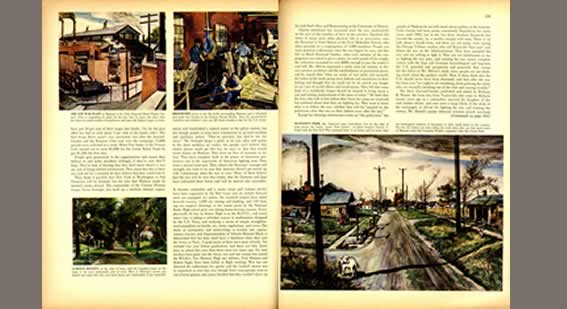








 |
 |
 |
 |
||||
 |
 |
 |
|||||
 |
|||||||
 |
|||||||
Zoltan Sepeshy 1898 - 1974. Born in Czechoslovakia to affluent Hungarian parents he was trained in Budapest and Vienna. At the age of eight he remembered being fascinated by things American when his parents to him to Buffalo Bill's Wild West Show in Budapest. ” So we went and met this wonderful guy. And he shook hands with everybody including myself and he said, 'Zoltan, when you come to America come and see me.' " This was in 1908. Sepeshy came to the United States in 1921. Interview with ZS, Cranbrook 1964, "And I came as a stupid little immigrant. And I say stupid little immigrant for one reason. I didn’t speak one single word of the language. I had five dollars in my pocket when I arrived here and I didn’t know where I was going. It’s wonderful. And this is what I mean by pioneering. No pioneer ever knew where he was going to. He just went. I landed in this country in New York and I pushed a fur cart to keep body and soul together. In the clothing district. That, too, is quite wonderful. And after that I came and took advantage of my uncle’s offer to live with him and shortly after that he died so I was completely left alone. And people who kept my body and soul together were a barber, a milkman and a calciminer. The calciminer was then a painter who calcimined closets in homes. And I also painted signs [for the] Walker Outdoor Advertising Company. Signs on top of buildings. Deathly scared. Literally, with a pail of paint in front of me, scared stiff on the fourteenth story of a building called the Hammond Building which is now gone. This I did then. It’s absolutely wonderful. And I stacked lumber in lumber yards and all that sort of thing. But this is all in pioneering." A year after arriving in New York, he went to the artists' colony in Taos. Paintings he did there sold well in Detroit. He was then to make contact with Cranbrooke Academy and George Booth. His teaching career was launched .Later, after Saairinen's death he was to become its Director. By the time of the FORTUNE commission, Sepeshy was clearly in the group of artists seeking the spirit of the lives of ordinary Americans, claiming that as an outsider he understood more.
|